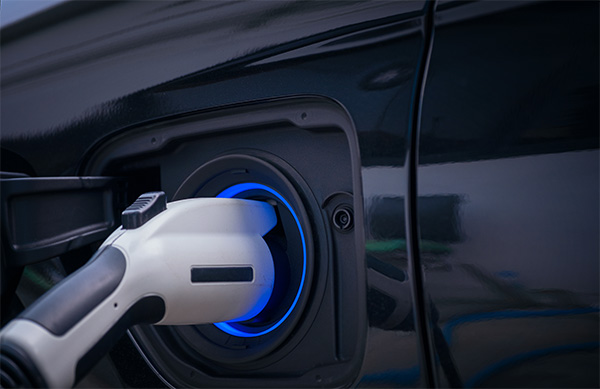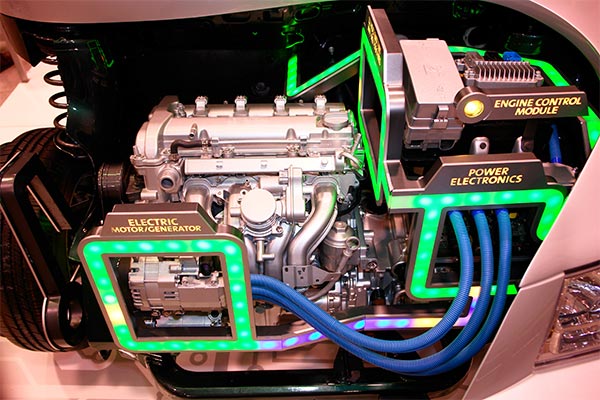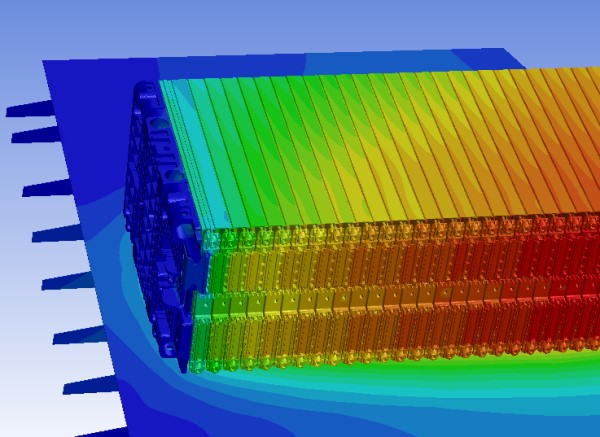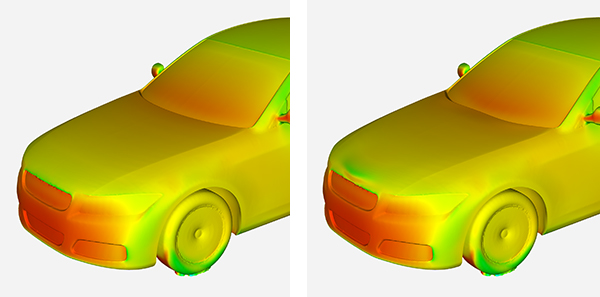4 Expert Ways to Improve Electric Car Ranges with CFD

If the automotive industry ever fully transitions from fossil fuels, it must focus on electric car range.
The high energy density contained in a full tank of gasoline enables engineers the freedom to design cars that offer many comforts and long travel distances. However, even modern electric powertrains are substantially heavier and larger than their internal combustion engine counterparts, constraining a vehicle’s range.
As a result, electric vehicle design engineers are discovering new ways to optimize the structures of their vehicles. The idea is to obtain better functionality from smaller, lighter form factors.
However, there is only so much weight that can be shed from a car. Eventually, engineers must examine how computational fluid mechanics can help increase the mileage of electric vehicles.
So, here are four ways that computational fluid dynamics (CFD) can improve electric car ranges. To learn about these simulations in detail, read: Designing Next Generation Electric Powertrains Using CFD Simulation.
1. Improving Electric Motor Thermal Cooling
Electric cars’ smaller form factors require engineers to compress the motor’s size. This smaller volume makes it critical to simulate the heat transfer from the motor so engineers can properly design its cooling system.
If the automotive industry ever fully transitions from fossil fuels, it must focus on electric car range.
The high energy density contained in a full tank of gasoline enables engineers the freedom to design cars that offer many comforts and long travel distances. However, even modern electric powertrains are substantially heavier and larger than their internal combustion engine counterparts, constraining a vehicle’s range.
As a result, electric vehicle design engineers are discovering new ways to optimize the structures of their vehicles. The idea is to obtain better functionality from smaller, lighter form factors.
However, there is only so much weight that can be shed from a car. Eventually, engineers must examine how computational fluid mechanics can help increase the mileage of electric vehicles.
So, here are four ways that computational fluid dynamics (CFD) can improve electric car ranges. To learn about these simulations in detail, read: Designing Next Generation Electric Powertrains Using CFD Simulation.

1. Improving Electric Motor Thermal Cooling
Electric cars’ smaller form factors require engineers to compress the motor’s size. This smaller volume makes it critical to simulate the heat transfer from the motor so engineers can properly design its cooling system.
Think about it — when electric motors have permanent magnets within them that get too hot, they will demagnetize, destroying the engine. Additionally, like any engine, the cooler its surroundings, the more efficient its work.
To design an optimal system that cools the motor, engineers use Ansys Fluent to create a detailed 3D thermal model. This model can then be simplified into a reduced order model (ROM) that delivers results fast and accurately. Next, engineers use the ROM to quickly assess and iterate cooling system designs that fit the size, weight and space restrictions of the electric vehicle.

2. Optimizing Battery Thermal Cooling
Engineers will face a similar challenge cooling down the electric powertrain’s battery. However, in this case, the batteries must operate in a defined temperature window to perform effectively.
Low temperature presents another challenge for battery management because extreme cold negatively impacts battery efficiency. Therefore, engineers must understand their battery’s performance envelope for implementation into their optimizations, iterations and ROM creations.
Additionally, the battery will produce heat each time it is charged and discharged. Therefore, to increase electric car range and reduce charging times, battery management simulations must factor in charging and discharging cycles.
3. Fine-tuning the Battery’s Electrochemistry
So, how can engineers better understand their battery’s performance envelope?
I am text block. Click edit button to change this text. Lorem ipsum dolor sit amet, consectetur adipiscing elit. Ut elit tellus, luctus nec ullamcorper mattis, pulvinar dapibus leo.
Interestingly, computational fluid dynamics can also help on this front. For instance, engineers can study electrochemistry using the lithium-ion battery simulation solution in Fluent. This solution can predict the performance of a battery design by assessing each individual cell and how those cells are connected into modules and packs.
Engineers can then use these simulations to ensure their battery designs have a long life, resist thermal abuse and optimize power output. In fact, the simulation can even be used to assess the aging of a battery and its risks of thermal runaways.
By using these simulations, engineers can better understand the performance envelope of their electric battery so they can effectively design its cooling and heating systems.

4. Fine-tuning External Aerodynamics
Once engineers optimize the battery, motor and vehicle weight, they can gain even more electric car range by improving the external aerodynamics. By reducing the drag on the car, engineers can reduce the load placed on the electric powertrain. Therefore, the vehicles will travel farther on a single charge.

For instance, engineers do not typically assess how a car’s hood could affect drag. However, this adjoint solver demonstration shows how it reduced a car’s drag coefficient by 4% by optimizing the shape of the hood.
To learn in detail how automated shape optimizations, electrochemistry simulations and ROMs can optimize the design of electronic vehicles, read: Designing Next Generation Electric Powertrains Using CFD Simulation.
Any and all ANSYS, Inc. brand, product, service and feature names, logos and slogans such as Ansys, Ansys Fluent are registered trademarks or trademarks of ANSYS, Inc. or its subsidiaries in the United States or other countries.





